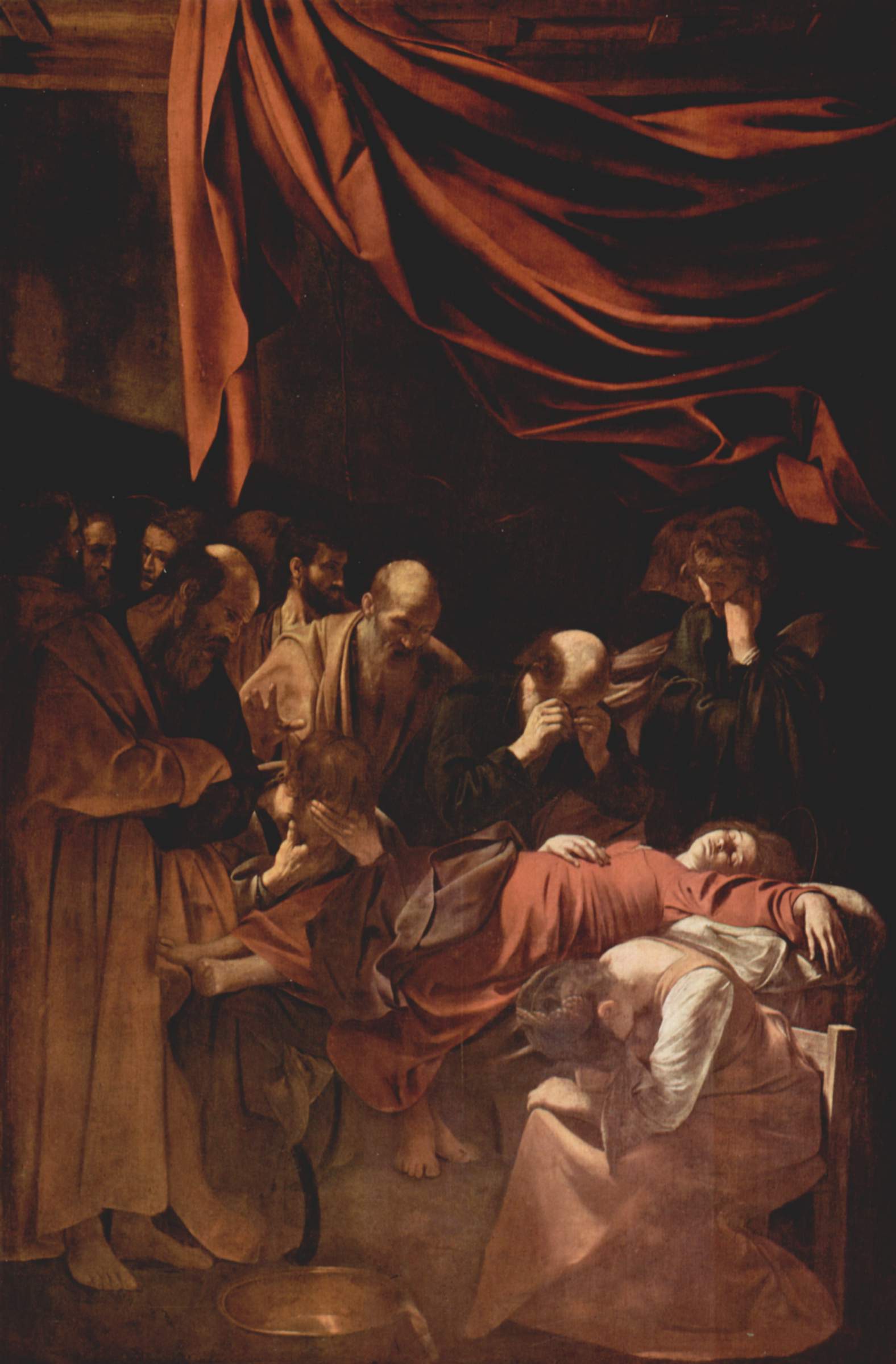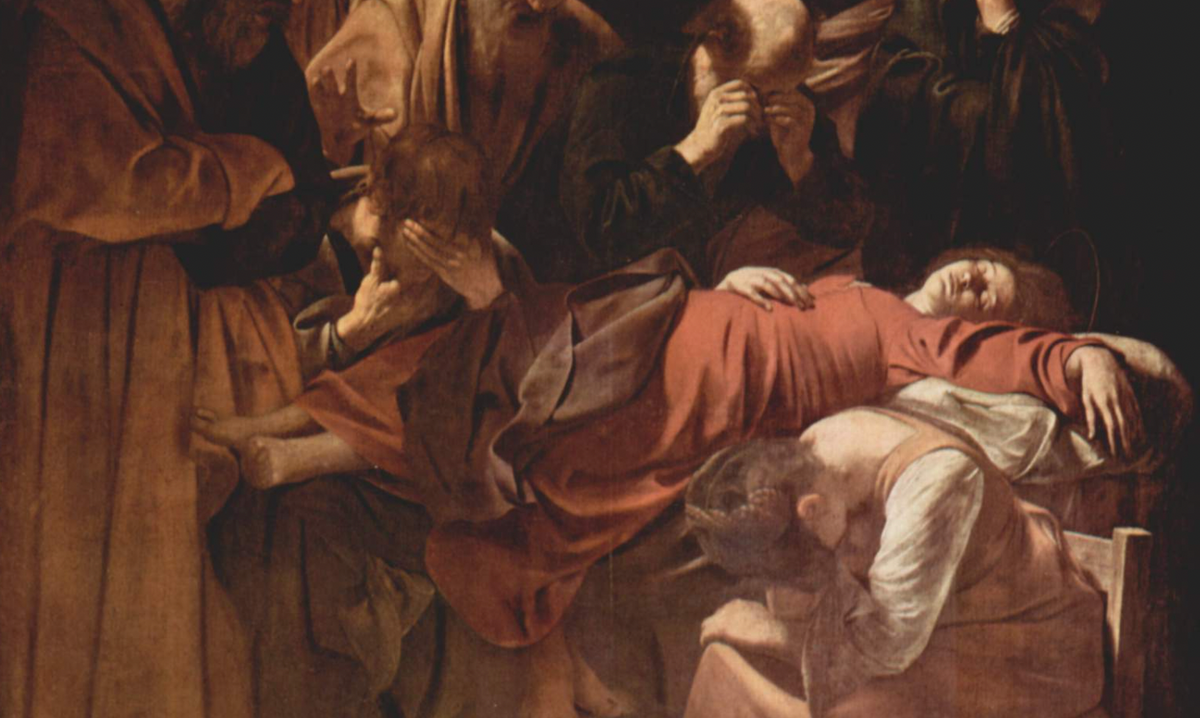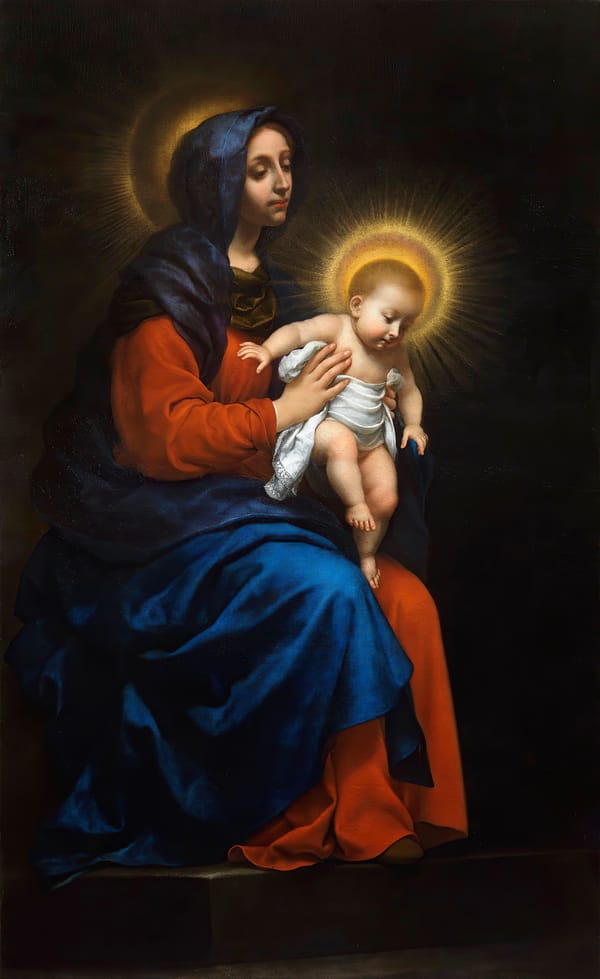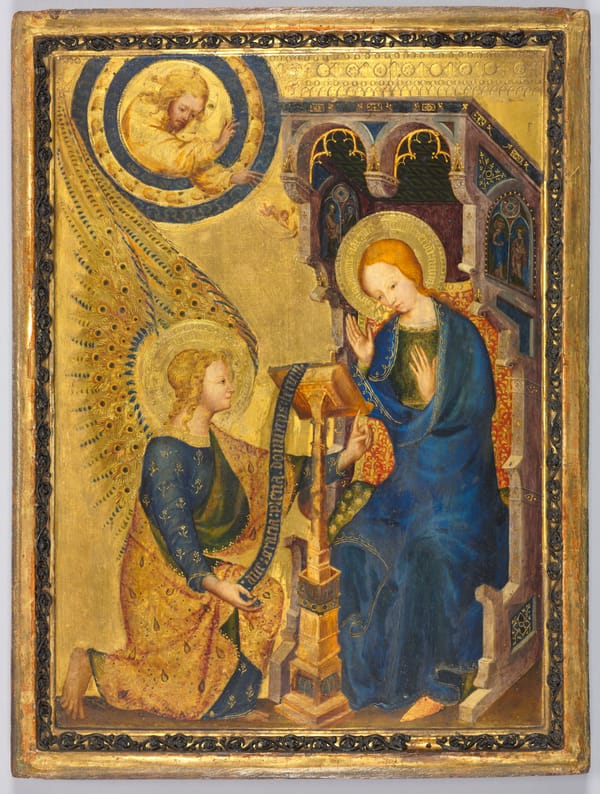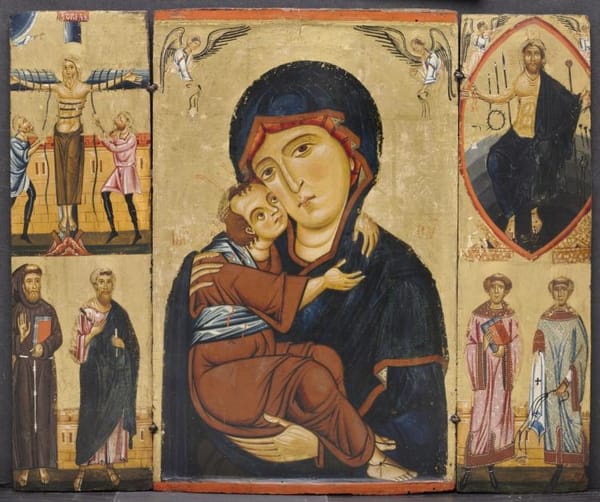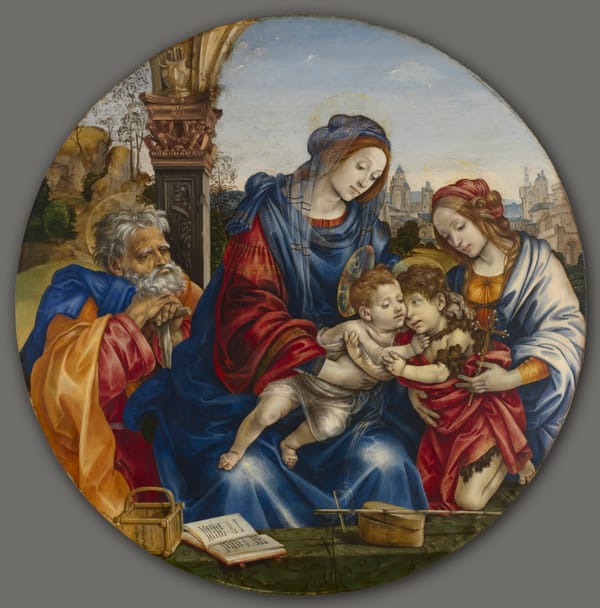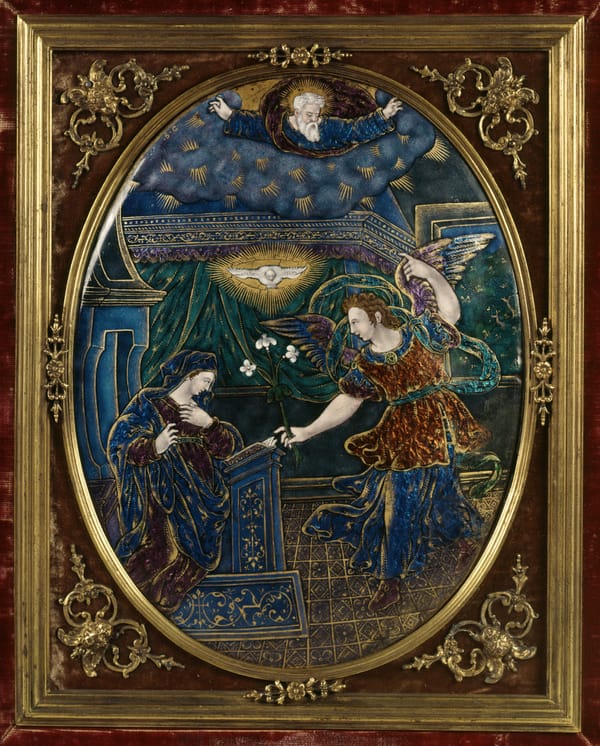When he painted The Death of the Virgin (c. 1601–06), Caravaggio had been working in Rome for fifteen years. The painting was commissioned by Laerzio Cherubini, a papal lawyer, for his chapel in the Carmelite church of Santa Maria della Scala in Trastevere, Rome; the painting could not have been finished before 1605–06. The depiction of the Death of the Virgin caused a contemporary stir, and was rejected as unfit by the parish.
The painting recalls Caravaggio's Entombment in the Vatican in scope, sobriety, and the photographic naturalism. The figures are nearly life-sized. Mary lies reclined, clad in a simple red dress. The lolling head, the hanging arm, the swollen, spread feet depict a raw and realistic view of the Virgin's mortal remains. Caravaggio completely abandons the iconography traditionally used to indicate the holiness of the Virgin. In this cast-off body, nothing of the respectful representation found in devotional paintings remains.
Free Downloads Below
Hi-Res
1200px
800px
